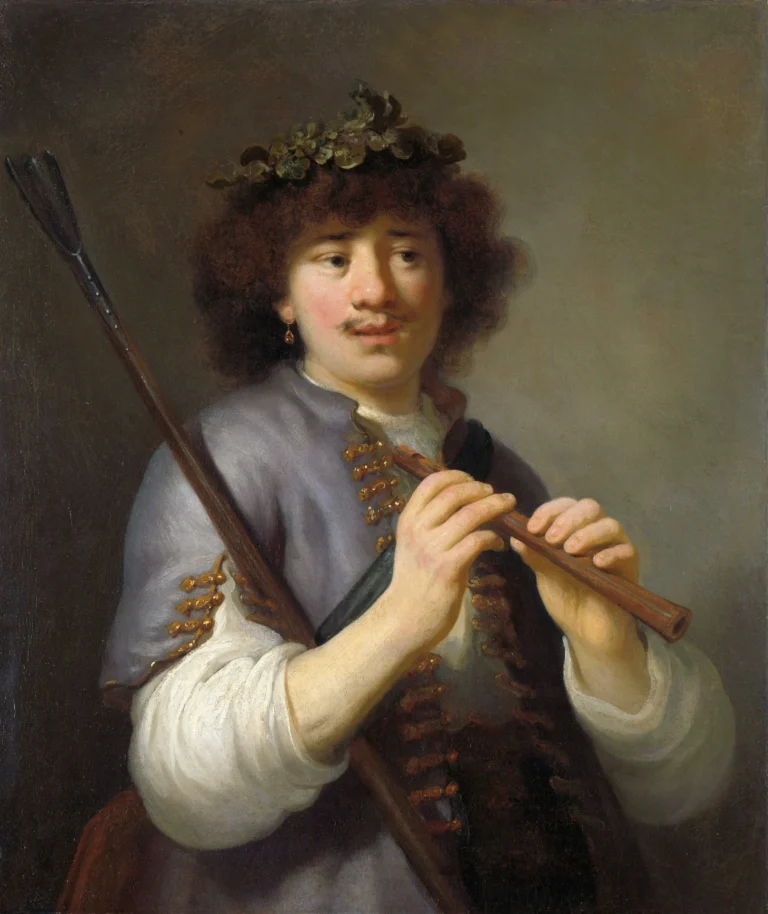A Young Man in a gorget with a plumed hat
Attributed to Rembrandt van Rijn, 'A Young Man in a Gorget and Plumed Hat' features a young soldier adorned in period military attire, complete with a gorget and a plumed hat, epitomizing the fashion of the 17th century. This artwork is renowned for its chiaroscuro technique, displaying the dramatic interplay of light and shadow that adds psychological nuance to the young man's portrayal. The painting invites viewers to ponder its attribution and the artistic legacy of Rembrandt and his contemporaries.
Early to Mid-17th Century (1620s - 1669)
About the Artwork
The story behind 'A Young Man in a Gorget and Plumed Hat' lies in the uncertain attribution typical of many 17th-century works. While many art historians agree it showcases the distinctive style of Rembrandt, the debate persists whether it is a piece from his own hand or created within his workshop, possibly by a talented pupil. This uncertainty adds to the intrigue surrounding the artwork. The young man depicted represents the valor and fashion of military officers during this dynamic cultural period in Dutch history.
Did You Know
The gorget worn by the young man signifies not just military rank but also the armor’s historical role in protecting the throat during combat. Such pieces were often elaborate, reflecting the wearer’s status in society.
The painting’s attribution has sparked discussions among art historians, with some attributing it to Rembrandt himself while others suggest it may have been created by his workshop or pupils, showcasing the complexity in identifying artists’ works from the past.
This piece exemplifies Rembrandt’s mastery of chiaroscuro, a technique that employs strong contrasts between light and dark to create a dramatic effect and enhance emotional depth, marking a hallmark of his artistry that influenced countless subsequent artists.










